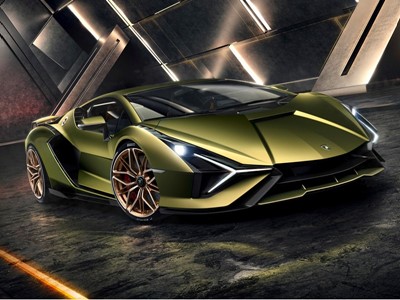Could Supercapacitors Replace Batteries in Future EVs?

Originally posted on TTI MarketEye Blog
By Murray Slovick, TTI
The most common electrical energy storage device used in vehicles is a battery. Batteries can store large amounts of energy in a relatively small volume and weight, and provide suitable levels of power for many applications.
Today, supercapacitors are being developed as an alternative to batteries, particularly for use in braking systems and in start-stop hybrids. But to be an attractive, all-around alternative to batteries, capacitors must evolve to handle higher power (by a factor of two or three) and have much longer shelf and cycle life than batteries.
A Little ‘Science 101’
 Two important quantities for consideration in designing energy storage systems, especially for electric vehicles (EV) and hybrid electric vehicles (HEV), are the specific energy and the specific power of the device. Specific energy is defined as the amount of energy stored per unit of mass and is expressed in watt-hours per kilogram (Wh/kg). Specific power is the peak power able to be delivered per unit of mass, stated as watts per kilogram (W/kg).
Two important quantities for consideration in designing energy storage systems, especially for electric vehicles (EV) and hybrid electric vehicles (HEV), are the specific energy and the specific power of the device. Specific energy is defined as the amount of energy stored per unit of mass and is expressed in watt-hours per kilogram (Wh/kg). Specific power is the peak power able to be delivered per unit of mass, stated as watts per kilogram (W/kg).
In both EVs and HEVs, cruising and accessories generally require small amounts of power for long periods. Conversely, acceleration requires large amounts of power for short periods, consuming less overall energy than extended cruise but requiring the storage device to endure high power discharge.
Both batteries and supercapacitors can satisfy automotive needs, but do so differently. Batteries employ chemical reactions to create electrical energy, while supercapacitors store electrical energy via the charge accumulation and charge separation mechanism that occurs at the interface when an electrode is immersed into an electrolyte solution.
The fast movement of charge in supercapacitors is due to very low internal electrical resistance. In effect, this means they can be charged and discharged at high specific current values (A/kg) that may be over 100 times that of batteries, without damaging the unit. The process of ions diffusing into the bulk of an electrode material for chemical reactions in batteries is much slower than the conduction of charge in response to electrostatic forces in supercapacitors.
Supercapacitors can be recharged very quickly and release a large amount of power. However, they don’t have the energy storage density of batteries. Therefore, they don’t store nearly as much power as batteries of the same physical size. Supercapacitors are, however, able to charge and re-charge millions of times without degrading like a battery typically does. That’s because no physical or chemical changes occur when a charge is stored within them.
In EVs, electrical energy can be stored in either supercapacitors or batteries. Both can be used together: when required, current is supplied to the motor, driving the wheels to accelerate the EV. From the supercapacitor bank, current passes through a bi-directional DC/DC converter to regulate the voltage so that it may be matched to the voltage of the battery bank as necessary, controlling the flow of current between them. Both electric energy storage devices are connected to an inverter, which converts DC to the AC required to drive the motor.
When supercapacitors are coupled to batteries, the capacitors are able to supply the peak power demands of acceleration in a lighter package (10 to 20 times lighter than a lithium battery counterpart) and can offset the need for extra battery mass.
Furthermore, supercapacitors are able to more efficiently capture and store power produced under regenerative braking – a technology that captures the kinetic energy lost as heat when a car decelerates and turns it into electricity – when exceptionally large peak currents can be generated.
The advantages of supercapacitors reasonably raise the question as to whether they may be suitable sources of primary power supply, as a viable alternative to internal combustion or battery-powered vehicles. Up to this point the answer generally has been “no,” but an Italian supercar manufacturer recently demonstrated a rather different, and interesting, approach.
Lamborghini’s Sián
The Lamborghini Sián (pronounced “shaan” and meaning “flash or lightning” in Bolognese dialect) debuted this fall. Rather than a lithium-ion (Li-ion) battery, the Sián employs a supercapacitor array that Lamborghini boasts is three times more powerful than a battery of equivalent weight.
In the Sián, supercapacitors power a small electric motor that delivers 34 horsepower, connected to the engine – a naturally-aspirated V12 that produces 785 horsepower. The e-motor provides immediate response and improved performance while also taking on the strain during low-speed maneuvers such as reversing and parking. However, the Sián will not be able to travel under electrical power alone.
The Sián’s electrical system, with the supercapacitor and e-motor together weigh only 34 kg. A symmetric power flow ensures the same efficiency in both charging and discharging cycles.
Read more>>>>












